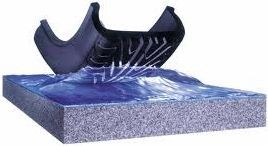Car tyre
Motorcycle tyre
Quad tyre
Heavy truck tyres
Agricultural tyres
Steel wheels
Alloy wheels
Package wheels + tyres
Snow chains
Balancing
Inflation
Tools and brackets
Repairs
Battery
Oils
Accessories
TPMS
Mounting - Tightening
Additives
Guide
Delivery and fitting
Pro
My account
Contact
One of the key roles of a tyre is to drain water off the contact patch when driving on wet roads.
Aquaplaning takes place when water separates the tread of the tyre from the road. it gathers insides the tread depth and creates a layer. When pressure is so high that water is no longer drained, the tyre loses contact with the road. It becomes nearly impossible to stay in control of the vehicle.
One of the main causes leading to aquaplaning is the extent to which the tyre is worn out. The shallower the tread pattern, the harder it becomes to drain water off. Contact with the road decreases progressively which makes the car liable to aquaplaning when braking, accelerating, etc
A step by step approach to aquaplaning
Underinflated tyres significantly increase the risk of aquaplaning.
| Tyre pressure | Speed | Explanation | |
|---|---|---|---|
 |
2.4 bar (35psi) | 60miles/h | The tread ( in dark in the picture) is completely in contact with the road. |
 |
2.4 bar (35 psi) | 60miles/h | The contact patch is reduced but water drainage is efficiently carried out thanks to the tread depth . |
 |
2 bar (30 psi) | 60miles/h | The contact patch is reduced, heightened risks of aquaplaning. |
 |
1.7 bar (25 psi) | 60miles/h | Water gathers under the tyre, contact with the road is practically inexistant, control of the car is lost. |
Car tyre